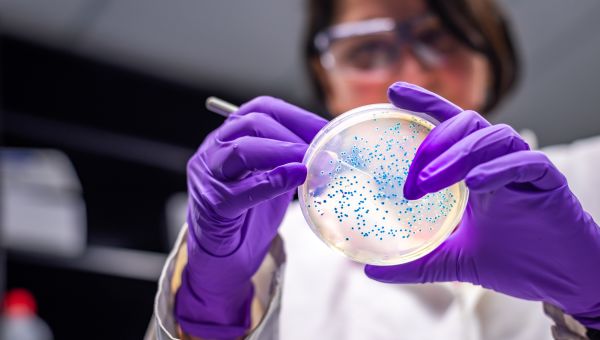Where did superbugs come from?
Antibiotic-resistant bacteria may change the health landscape—for good.
Updated on November 25, 2024

With all the media exposure superbugs have gotten in recent years, chances are you’ve heard the term. Superbugs are strains of infection-causing bacteria—including everything from staph to E. coli—that have become resistant to antibiotics. They’re an increasingly serious public health threat in the United States. and around the world. So, with all the advances of modern medicine, just how did this happen?

Pre-1930s: Before Antibiotics
There was a time when common ear infections could cause deafness and a simple scratch could lead to a fatal infection. Doctors had only a handful of drugs to choose from to relieve symptoms, but none were effective at fighting off common bacterial infections. A medical breakthrough came in the 1930s, however, when sulfonamides, today known as sulfa drugs, became the first antibiotics to gain widespread clinical use.

1940s to 1960s: Antibiotics Revolutionize Medicine
Sulfa drugs may have been a major breakthrough, but penicillin was hailed as a miracle drug after it was mass-produced in the mid-1940s. Penicillin was a huge step for the medical field, capable of treating what were once severe diseases and saving thousands of lives in the process. This started an explosive period of antibiotic discovery and production.

Late 1940s: Bacteria Gets Stronger
A few years after penicillin was introduced, doctors began noting that some infections were not responding to penicillin. Stronger antibiotics, such as methicillin and vancomycin, were produced, but some bacteria developed resistance to them, too. A strain of staph known as MRSA (methicillin-resistant staphylococcus aureus) appeared two years after methicillin was introduced and continues to be a serious health problem today.

Early 1970s-Today: Evolution of Superbugs
The ability of bacteria to evolve and develop drug resistance has outpaced the production of new antibiotics. What’s more, the more frequently antibiotics are misused, the quicker bacteria gain resistance—a big reason why the overprescription and misuse of antibiotics is a major problem in healthcare.
The Centers for Disease Control and Prevention (CDC) and World Health Organization (WHO) have warned that we soon could be slipping into a post-antibiotic era, where common infections again become untreatable—and, in fact, for some infections, we’re already there.

The Future of Superbugs
While alarming, the fight against superbugs isn’t hopeless. For one thing, awareness campaigns have made healthcare providers and patients more aware of antibiotic resistance over the years. Remember, if you have a viral infection: Antibiotics won’t do anything. They only work on bacteria.
On a larger scale, both the CDC and WHO have had initiatives aimed at stemming antibiotic resistance, and scientists around the world are working on new drugs to treat the dangerous infections. Years of research and testing are still needed, but these developments are a positive step toward combatting—and finally defeating—deadly superbugs.

World Health Organization. Antimicrobial Resistance. November 21, 2023.
Centers for Disease Control and Prevention. About Antimicrobial Resistance. April 22, 2024.
National Institutes of Health. How Sulfa Drugs Work. March 12, 2012.
USDA. Penicillin Opening of an Era. February 8, 2024.
Minnesota Department of Health. About MRSA. October 20, 2022.
Centers for Disease Control and Prevention. 2019 Antibiotic Resistance Threats Report. July 16, 2024.
World Health Organization. Action needed now to prevent a post-antibiotic future: WHO. November 16, 2015.
Pew Trusts. Superbugs: A Global Health Threat. March 3, 2022.
More On

article
